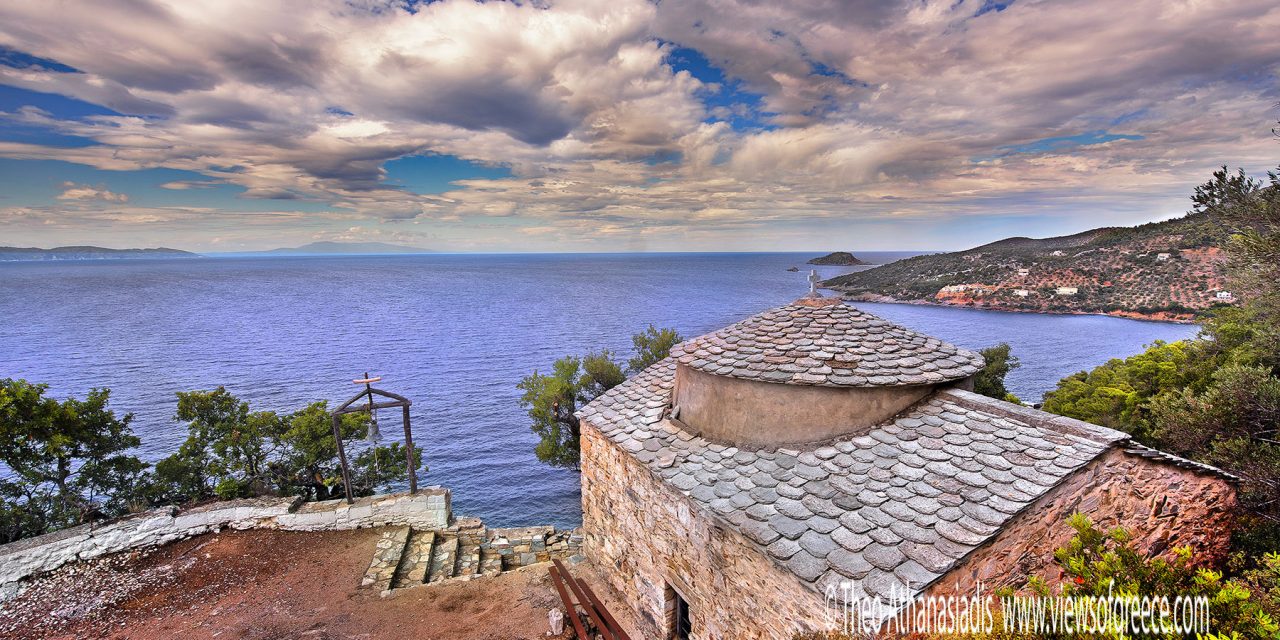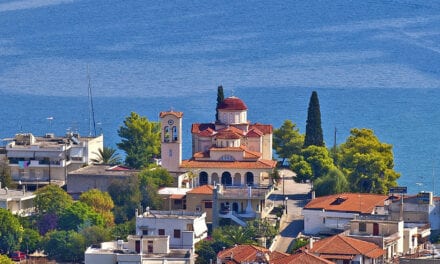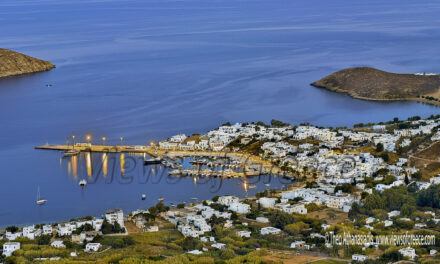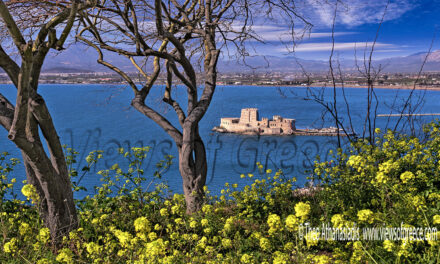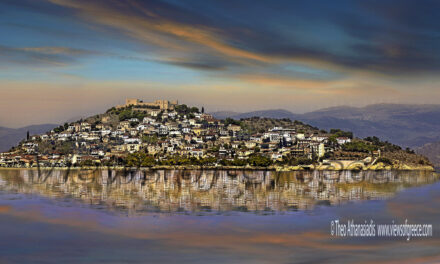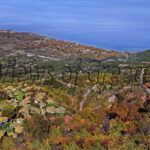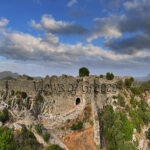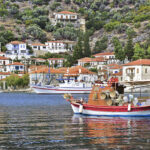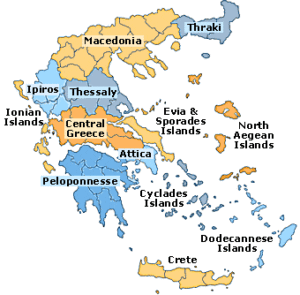A low profile destination that leaves the competitive tourism industry for its crowded neighbours. It nevertheless keeps gaining faithful and distinguished friends. Alonnisos is an “Arc” of an unspoilt nature, an alternative and different island…
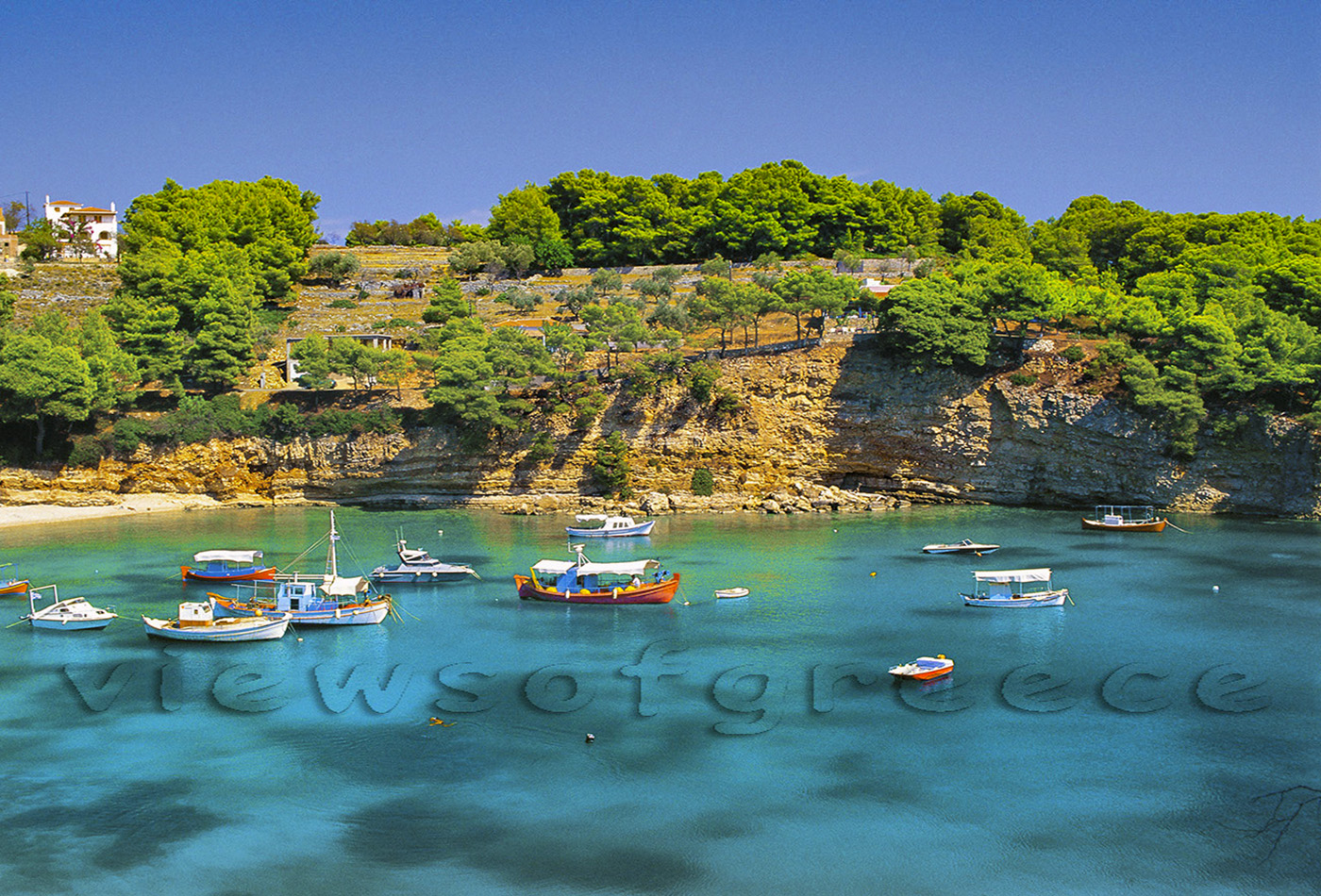
PHOTO: Theo Athanasiadis
First impressions: The island’s trademark is the superb pine forest that covers most of its surface, while the medieval Palio Chorio village highlights its specific character with interesting architecture and a breath-taking view. Slow pace of life, short distances and untouched beaches are Alonnisos island secrets.
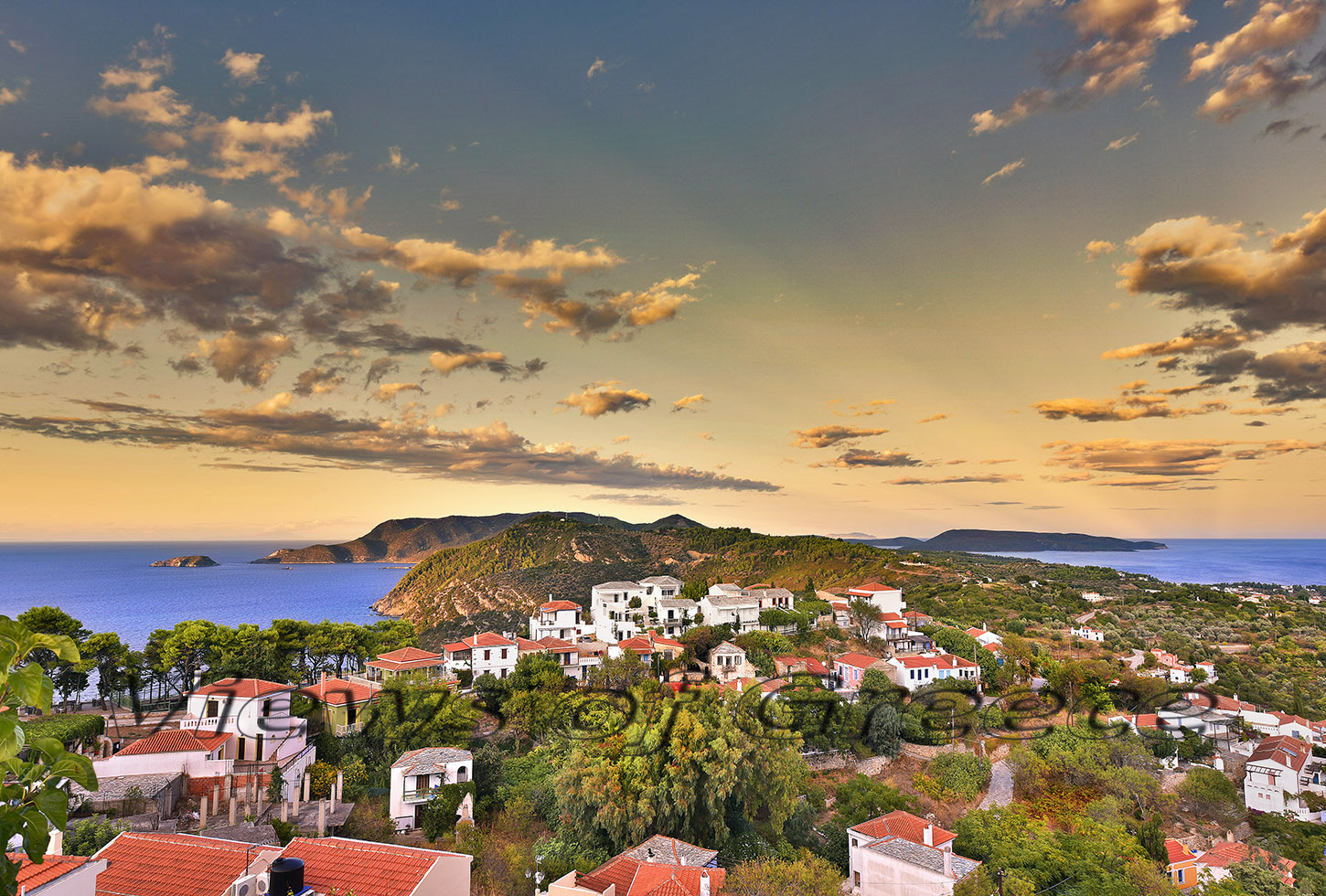
PHOTO: Theo Athanasiadis/Views of Greece
Chora and the port: Patitiri, the island’s port, claims no prize for its architectural elegance. However, here you can find the bustling market and all amenities. All tourist attraction lie in Chora or Palio Chorio, only 3 kilometres away, that surveys the ocean from a high vantage point. Even though the village was severely damaged in the earthquakes of 1978, it has nevertheless been characterized as a traditional settlement. Very few historical churches (17th ct.) remain standing, such as the churches of Saint Athanasios, Christ and Saint George at the Castle.
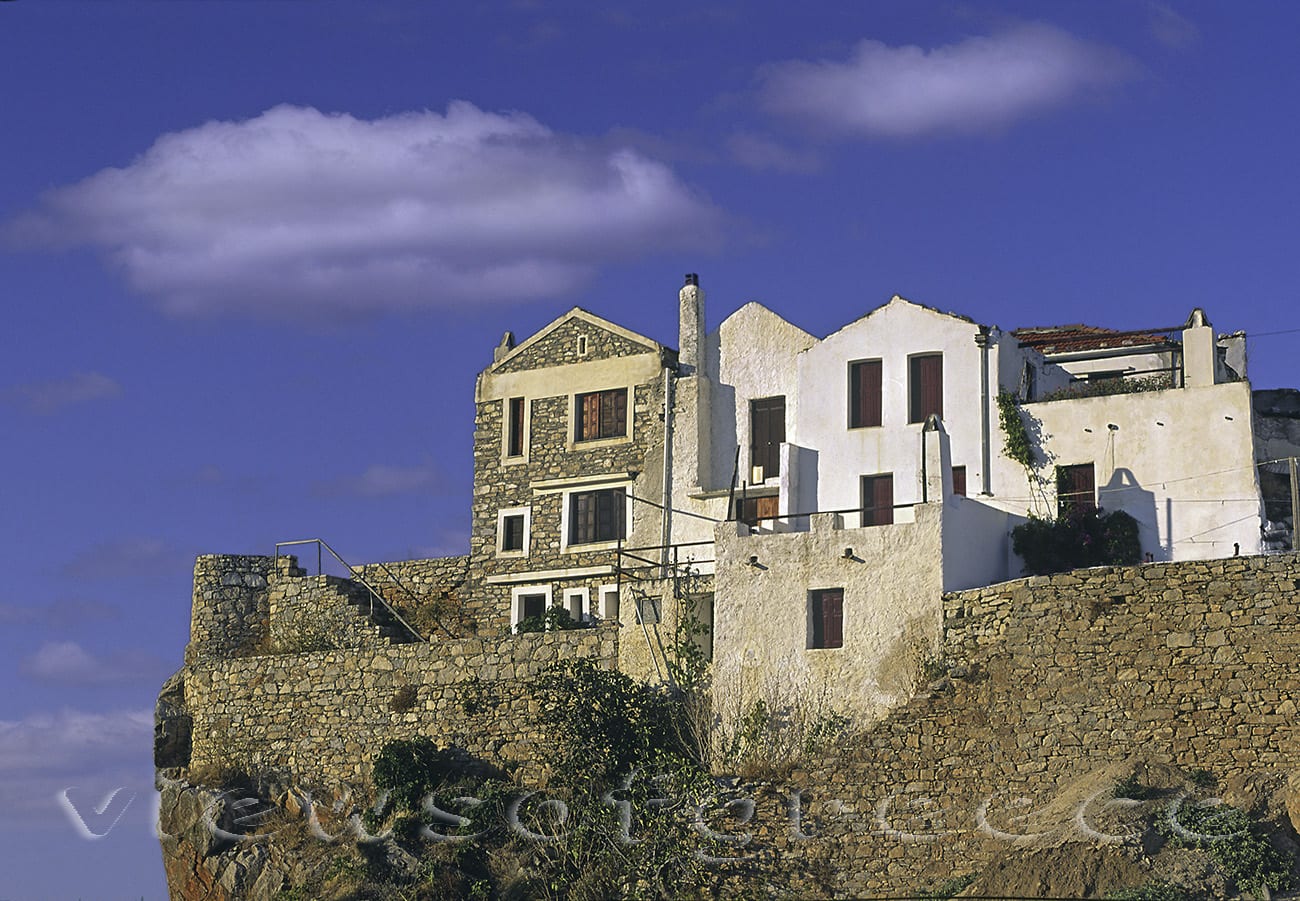
PHOTO: Theo Athanasiadis/www.viewsofgreece.gr
Take a stroll through the maze-like cobbled alleys, and ascend towards the ruins of the Venetian castle. A different aspect of the sea view, the island and Chora lying underneath is revealed from its ramparts.
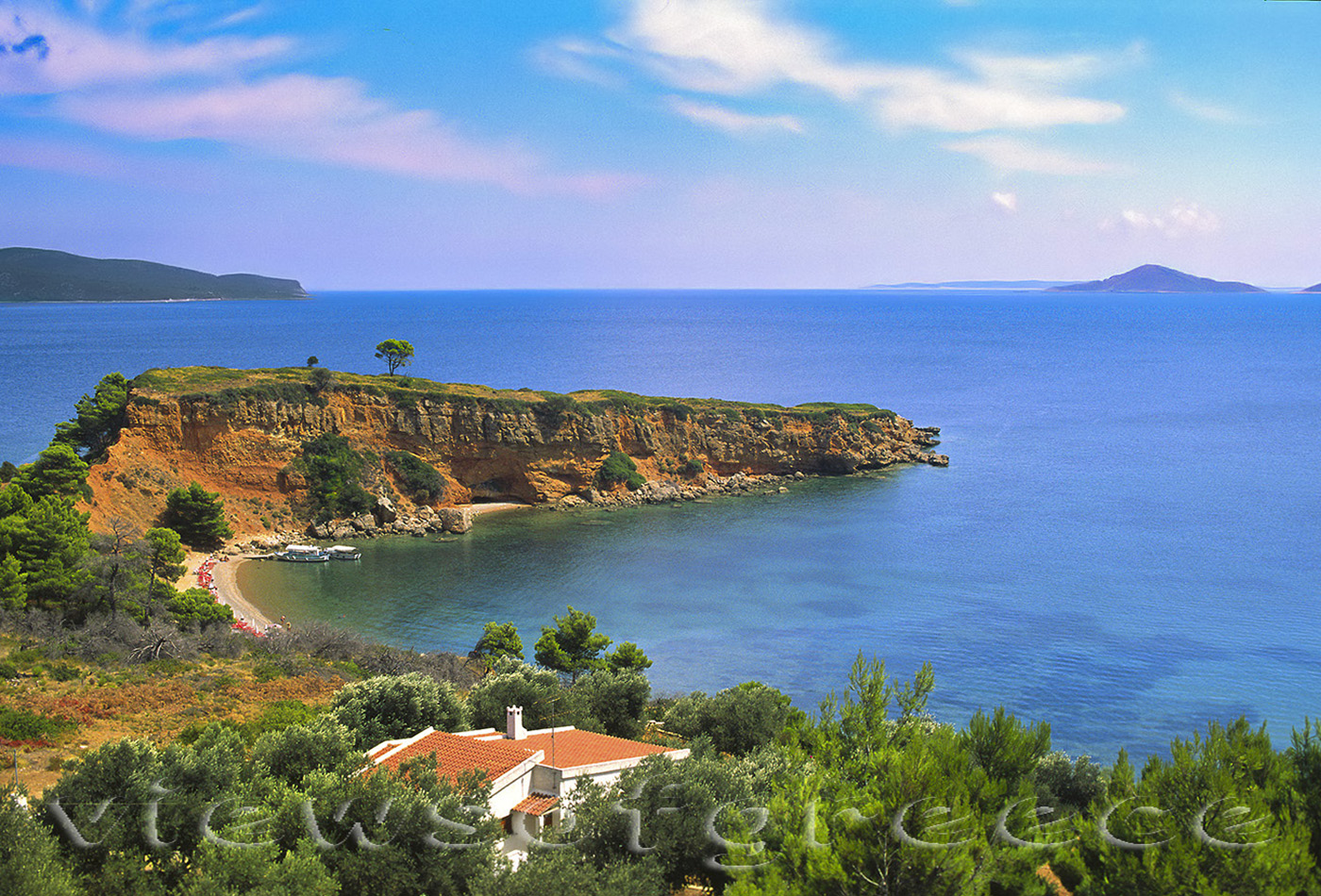
PHOTO: Theo Athanasiadis
History at a glance: The island’s ancient name was Ikos. During the Byzantine period, it was known as Liodromia or Liadromia, as well as Chiliodromia, a name preserved until 1836. Alonnisos was possibly the name of the nearby, and currently deserted, Kyra Panagia island. The island was famous for its wine as well as its pottery workshops.
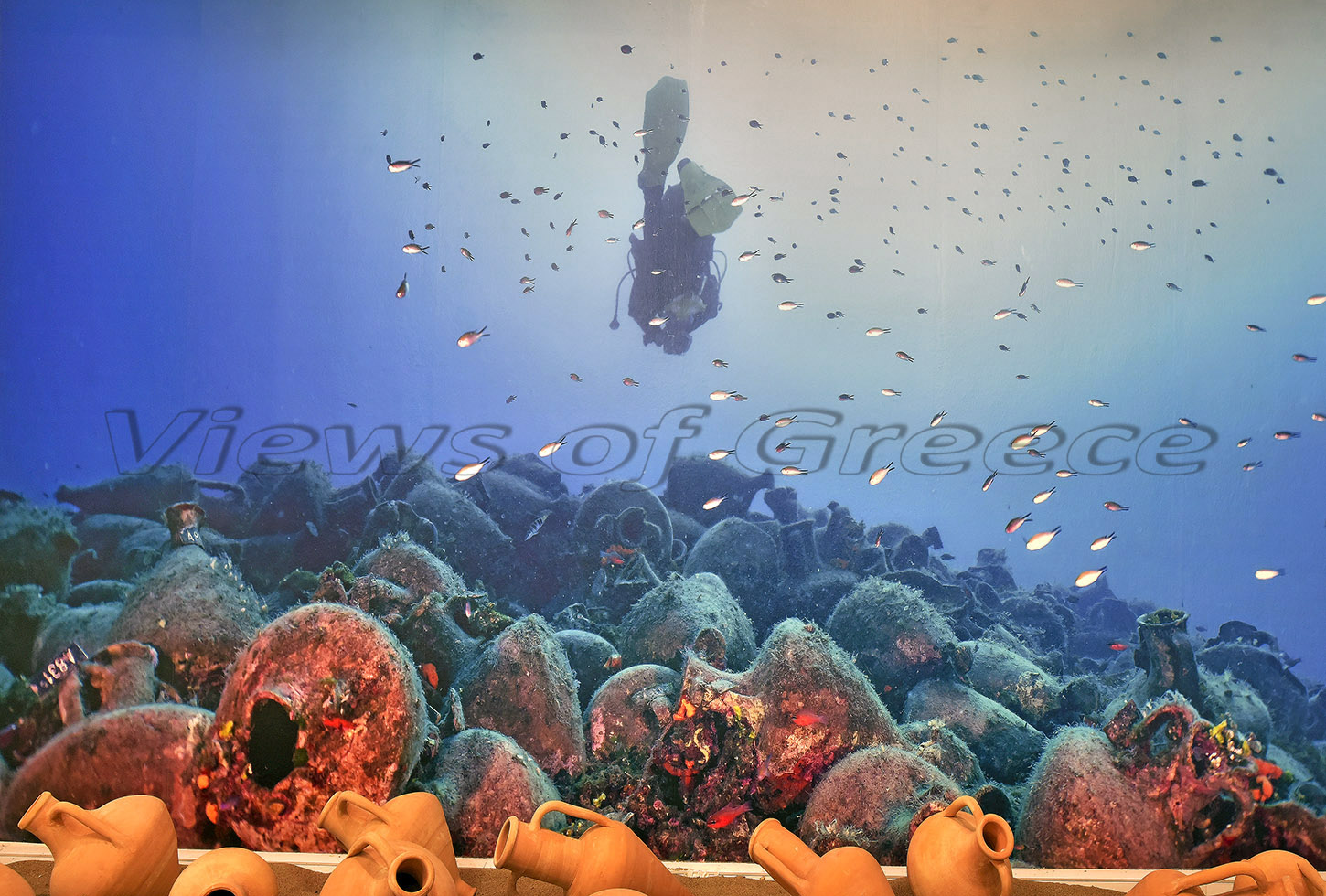
PHOTO: Theo Athanasiadis/Views of Greece (the images was captured at the Information Center for Submarine Shipwrecks)
Pirate activity: The islands close to Alonnisos used to be pirate lairs. In 1538, Barbarossa the pirate and later Turkish admiral, destroyed all villages and settlements on the island. After the liberation of Greece, Governor Kapodistrias was successful in eliminating piracy from the Aegean. The “Piracy Museum” is worth a visit (24240-66250).
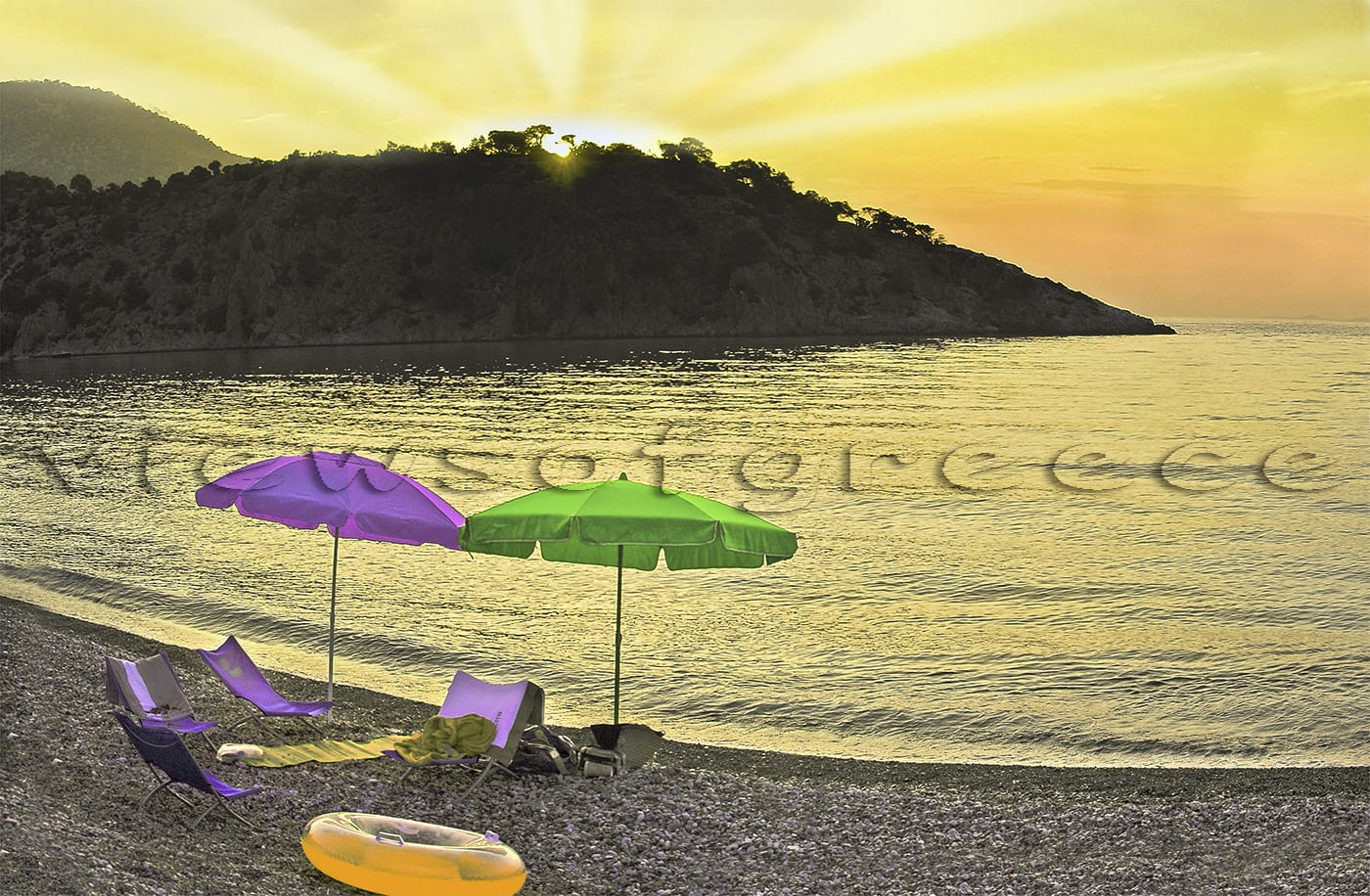
PHOTO: Theo Athanasiadis/www.viewsofgreece.gr
Main beaches
Rousoum Gialos: A small frequented beach, with thick pebbles, close to Patitiri. It has several rental rooms and taverns.
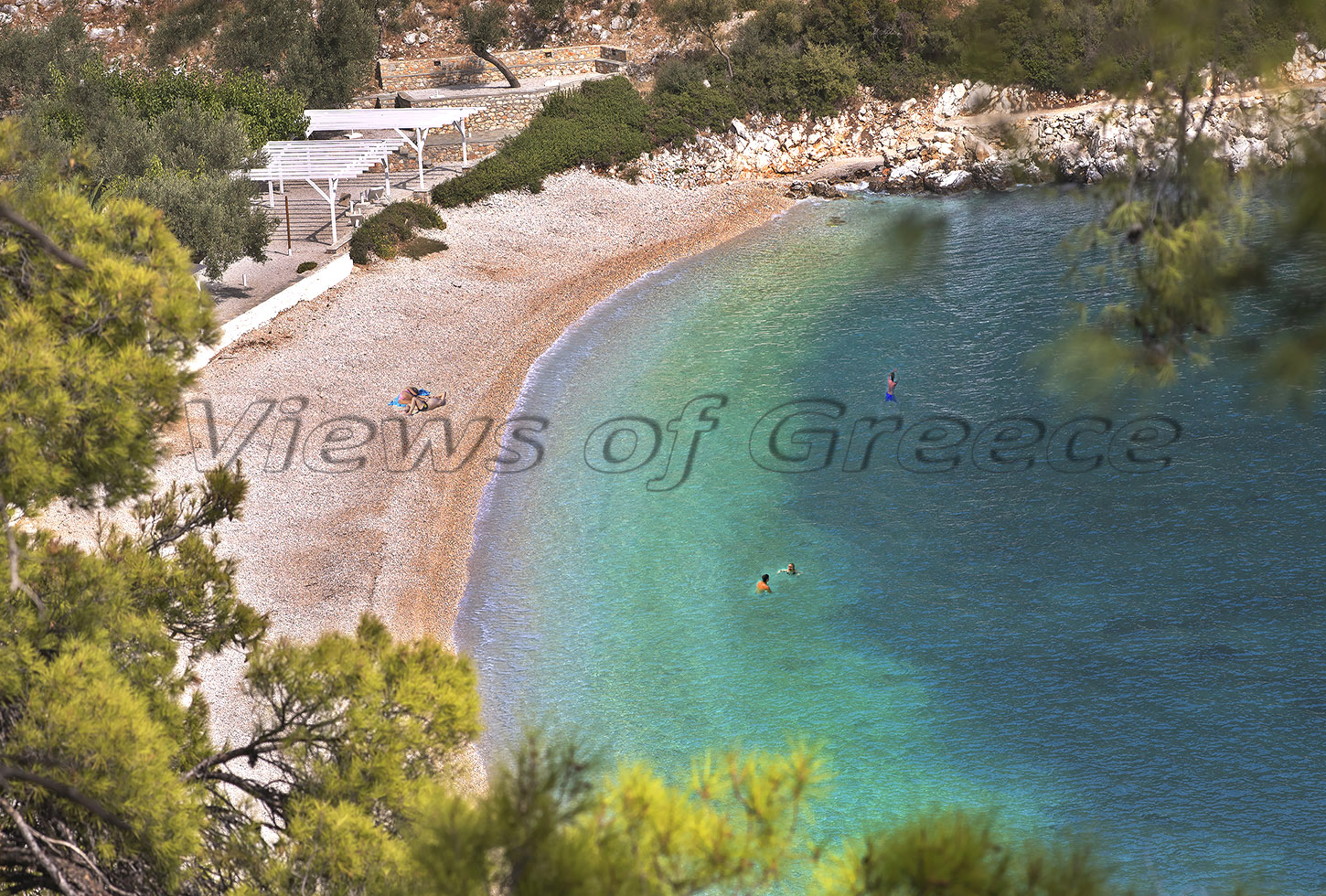
PHOTO: Theo Athanasiadis/Views of Greece
Milia: The white pebbled beach is nestled inside a pine forest.
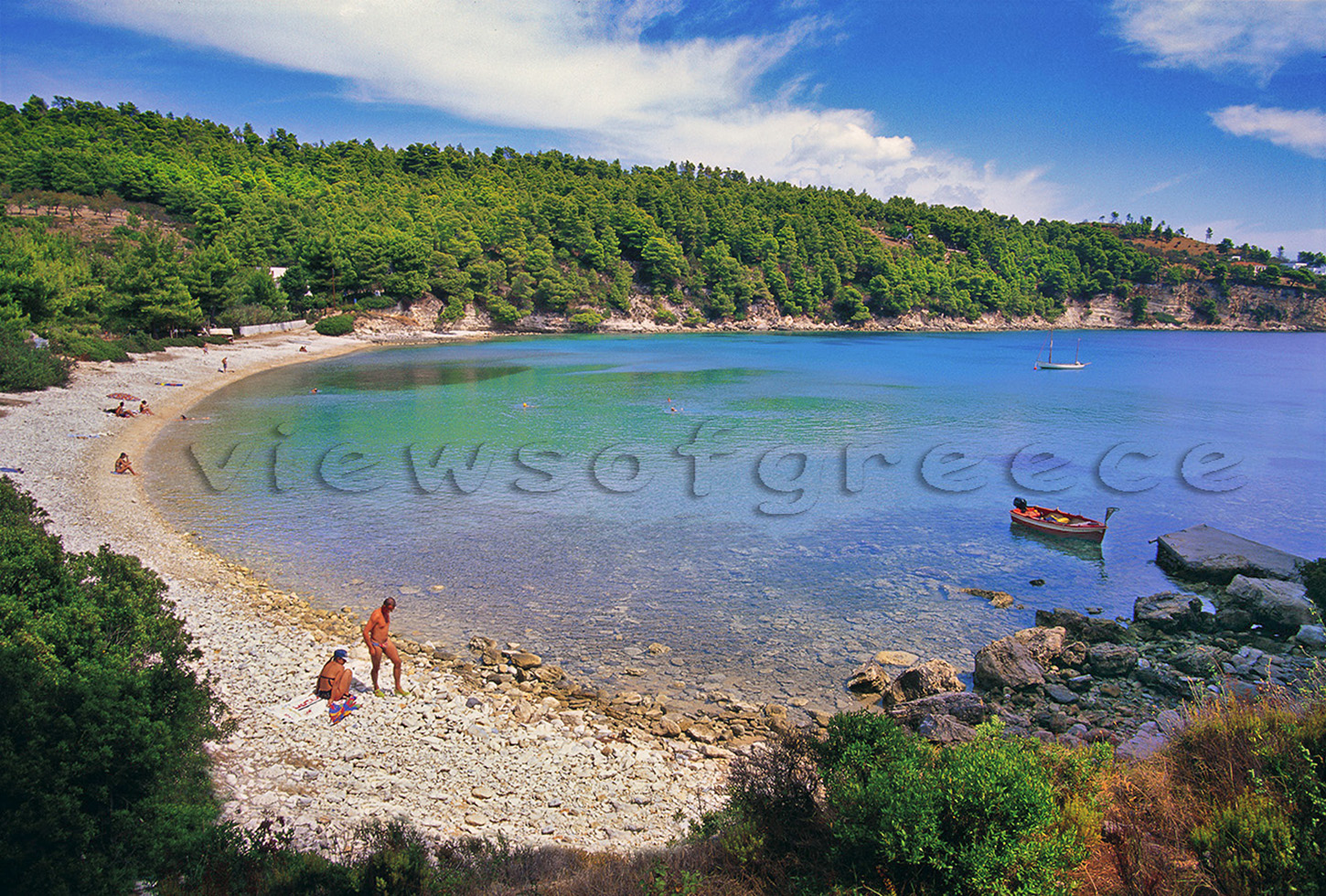
PHOTO: Theo Athanasiadis
Hryssi Milia, Tzortzis, Leftos Gialos: Located on the eastern side of the island, and offer a selection of rental rooms and hotels.
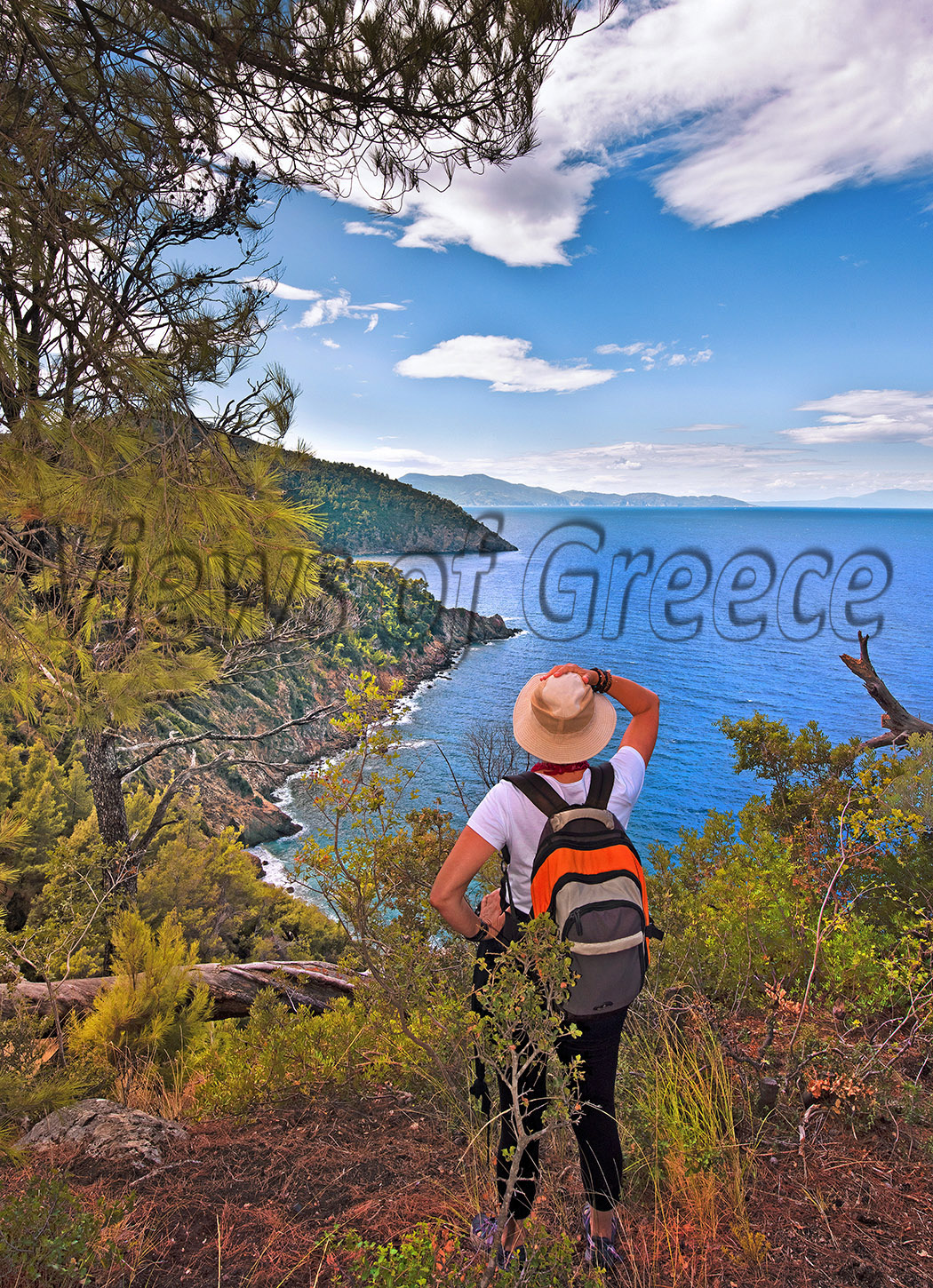
PHOTO: Theo Athanasiadis/Views of Greece
Kokkinokastro: The protected sandy beach on the root of the rock is considered the best on the island.
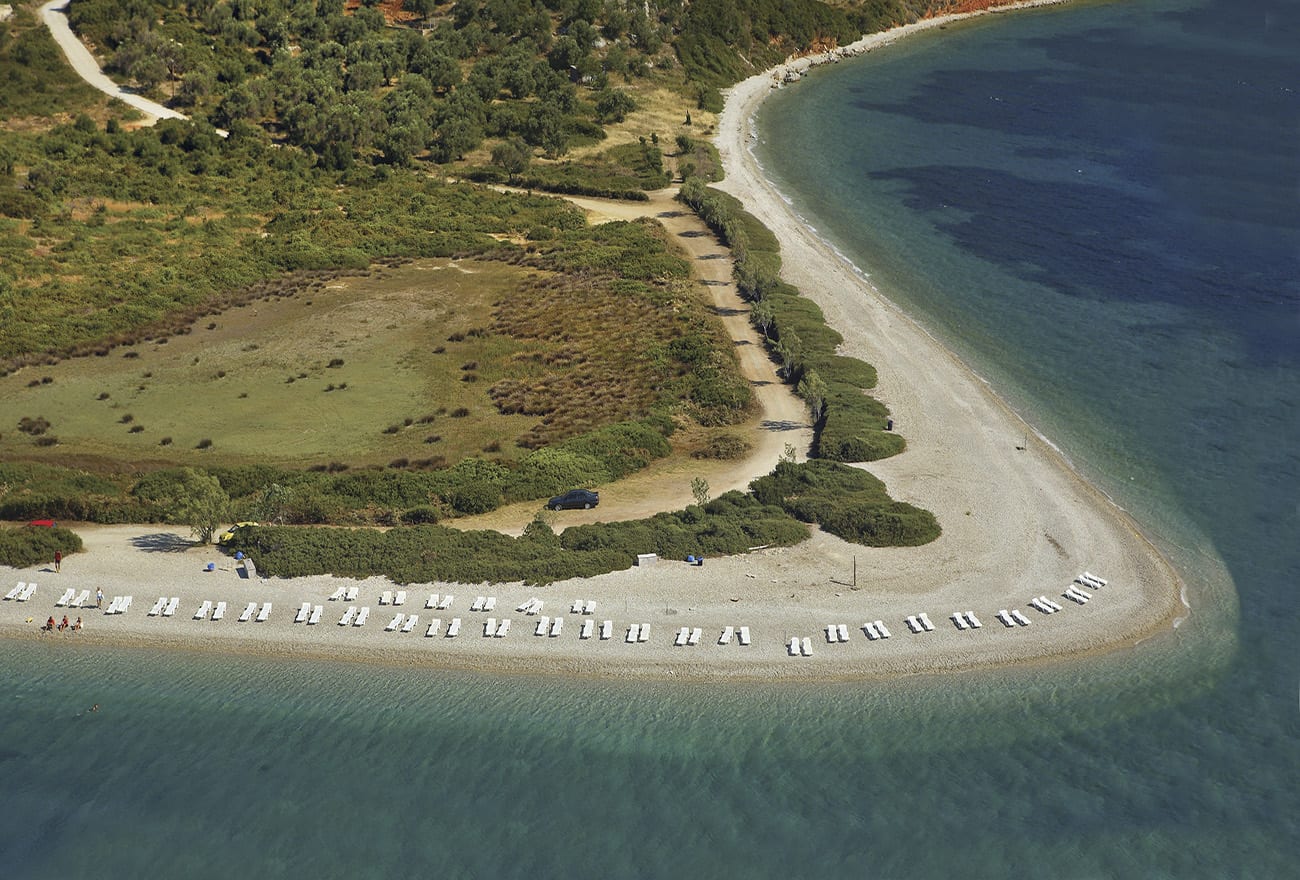
PHOTO: municipality of Alonissos
Agios Dimitrios: A long stretched out beach, with white pebbles, north of Steni Vala. One of the most characteristic places of the island.
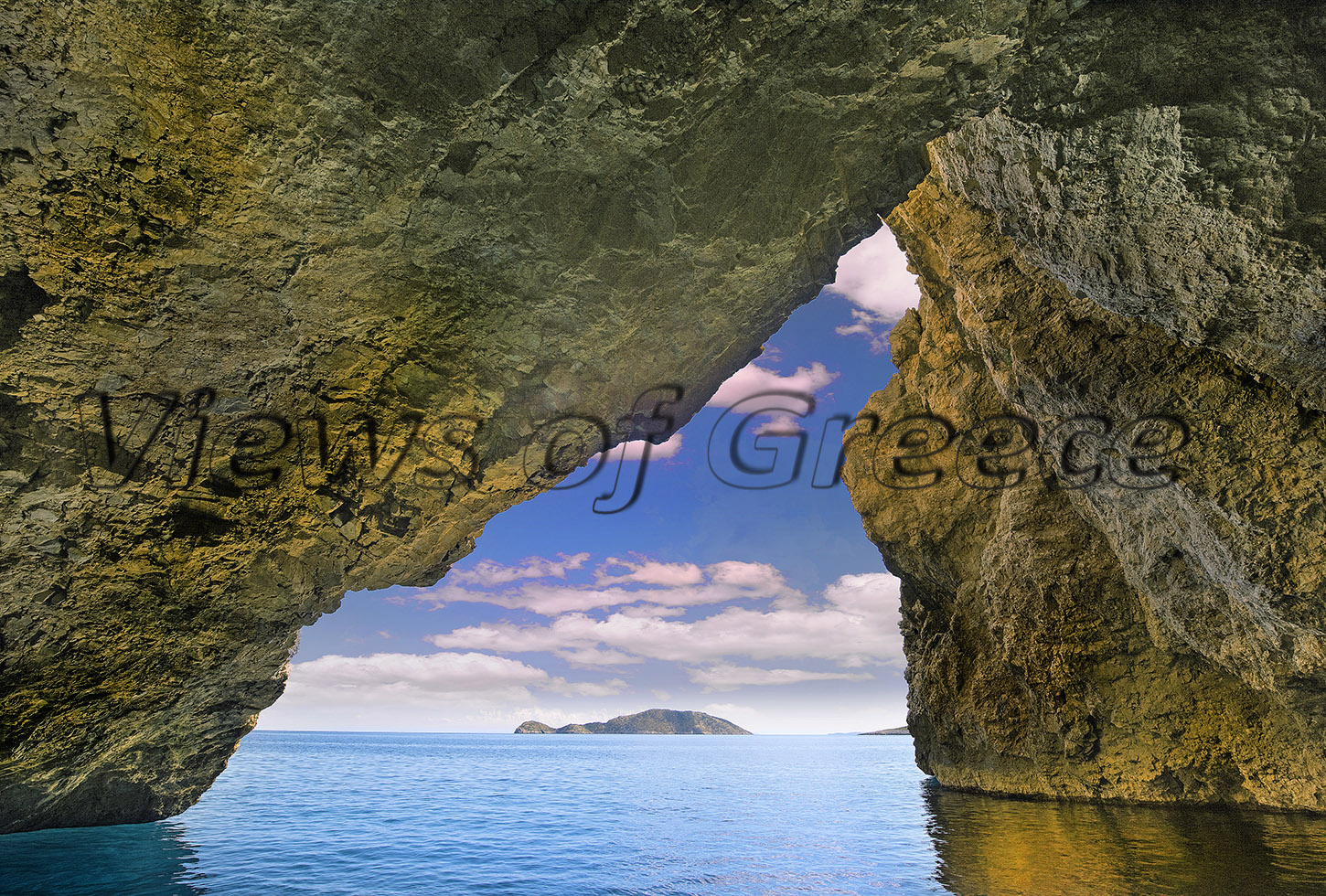
PHOTO: Theo Athanasiadis/Views of Greece
Mourtias, Marpounta, Vythisma: Consecutive small seasides surrounded by rocks carved away by the waves and a pine forest, on the southernmost tip of the island.
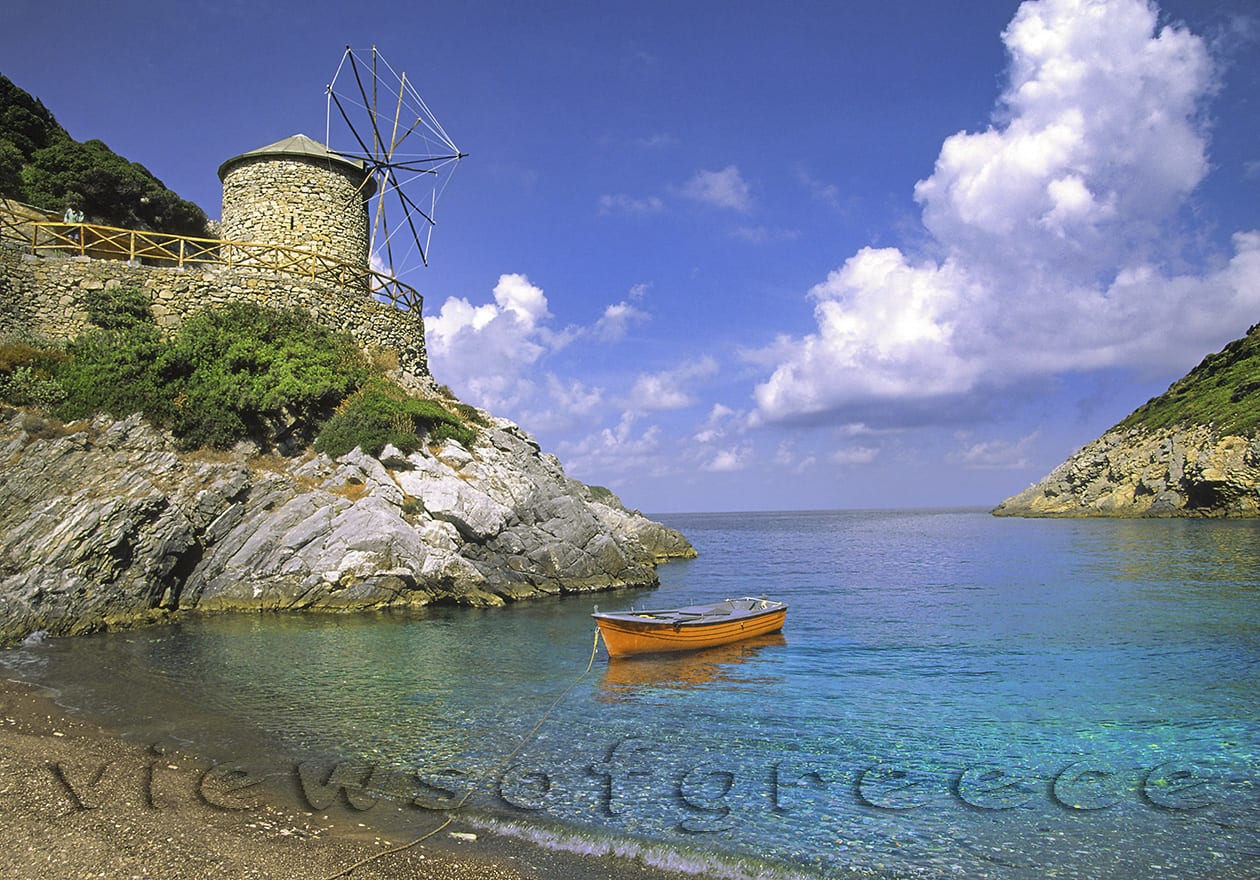
PHOTO: Theo Athanasiadis/www.viewsofgreece.gr
Gialia: A small hospitable embrace, with dark sand and grit, is exposed to the ‘meltemi” (northern winds).
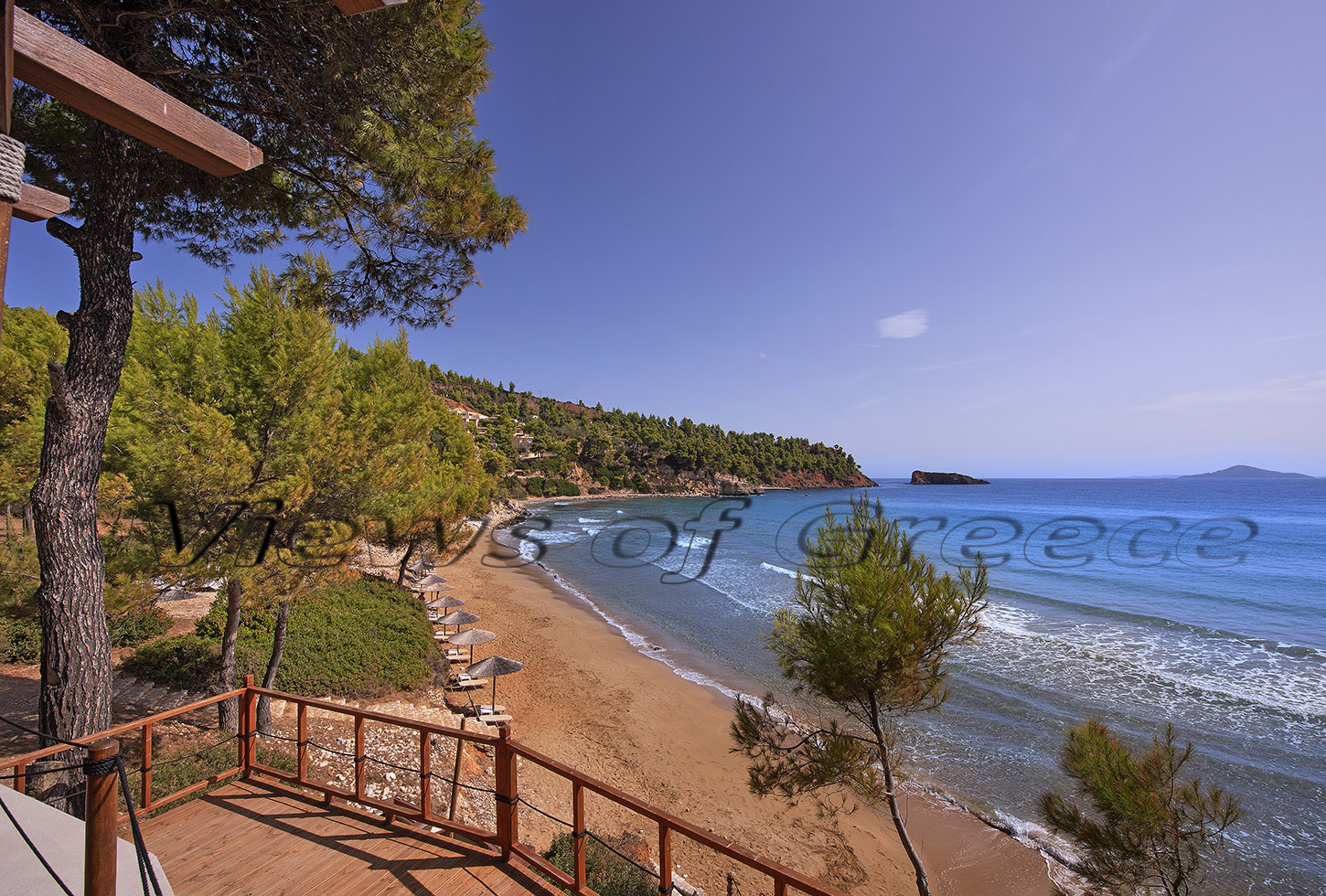
PHOTO: Theo Athanasiadis/Views of Greece
Tskalia, Agioi Anargyroi, Megali Ammos: Sand and pebbles everywhere. One of the most verdant and remote spots of Alonnisos. Accessible by dirt roads or footpaths.
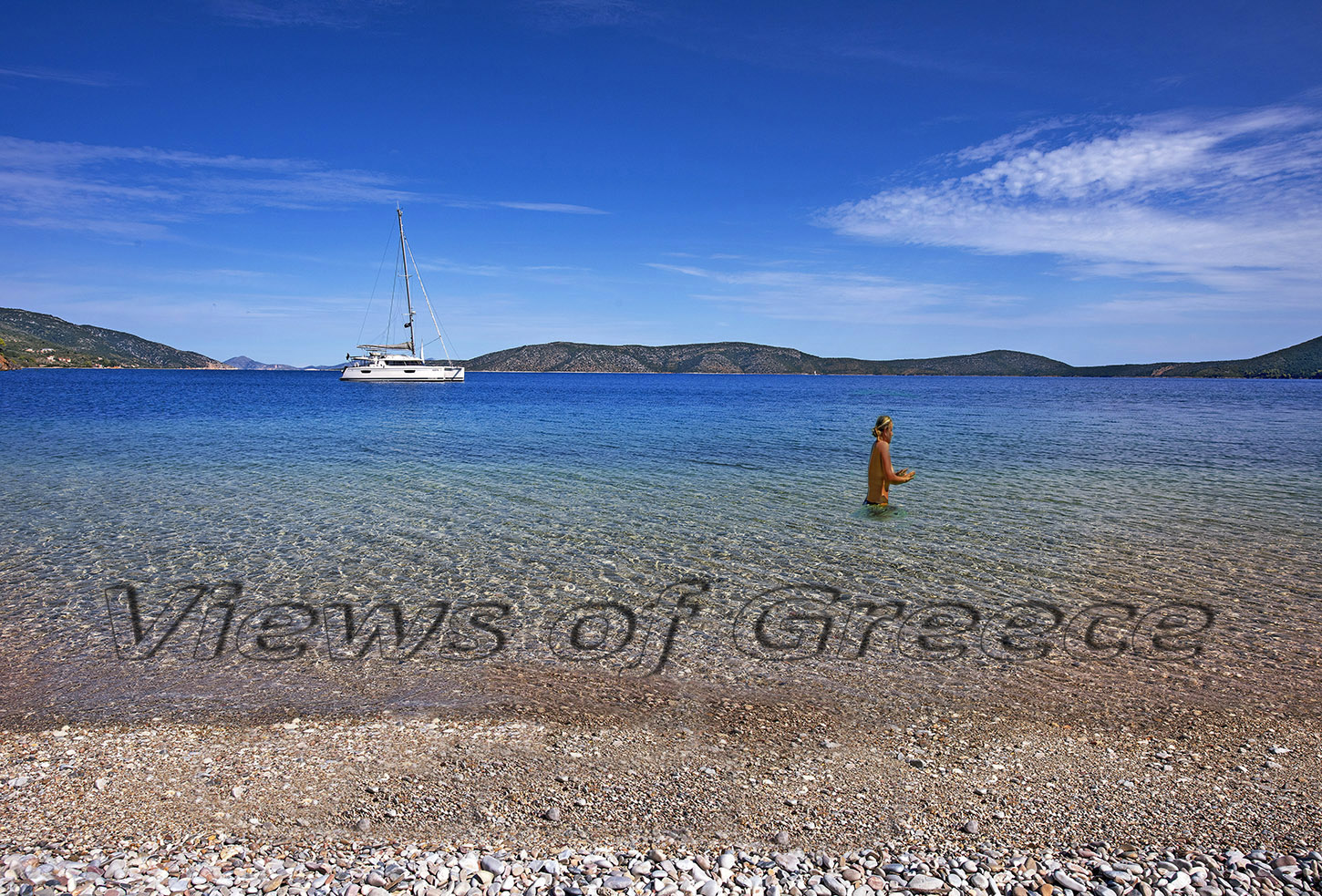
PHOTO: Theo Athanasiadis/Views of Greece
National Marine Park of Alonnisos – Northern Sporades: Greece is the most important habitat for the Monachus-monachus seal (it is estimated that 300 individuals of the species out of a global population of 600, live in our country). The “National Marine Park” consists of a cluster of small islands to the north and east of Alonnisos, which are the heart of the habitat; its purpose is to protect the population and only controlled access is allowed. You can find information at “MOM – Society for the Study and Protection of the Mediterranean Seal” www.mom.gr & www.alonissos-park.gr

PHOTO: Theo Athanasiadis/www.viewsofgreece.gr
Events: In July in Palio Chorio a traditional celebration takes place. A revival of the traditional threshing method, and a “Fishing night” is organized in Patitiri. On the 15th of August every year a festival is held here, with the re-enactment of the traditional wedding (www.alonissos.gr)
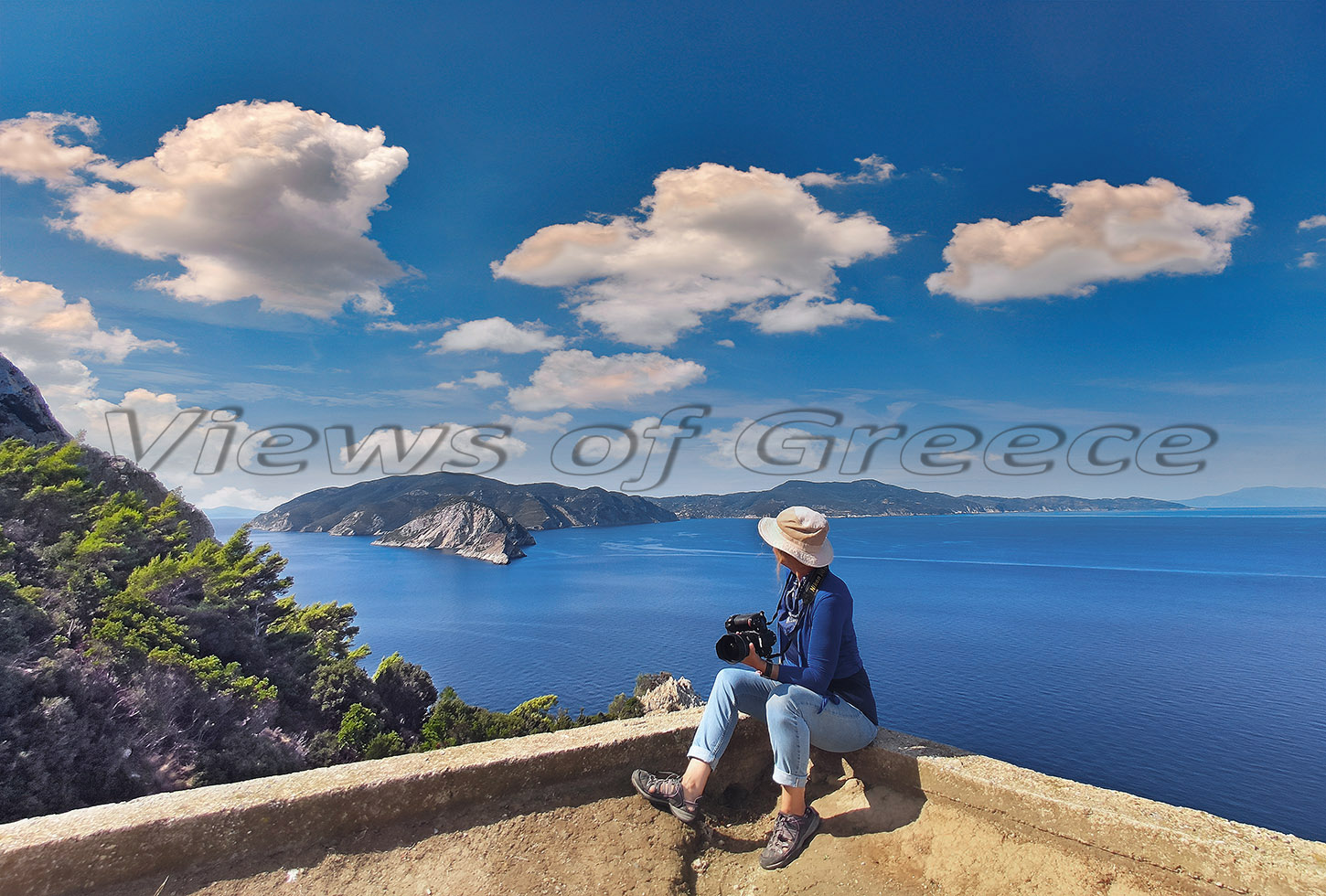
PHOTO: Theo Athanasiadis/Views of Greece
According to the law:2121/1993 and the international treaty signed in Bern (which has been ratified with the law:100/1975) reproduction of this work is forbidden in any way, partially or on the whole, including texts or photographs alike without the written consent of the creator. Intellectual property is aquired without formalities and without the need for provision prohibiting its disputation.
Copyright photo: Theo Athanasiadis / Views Of Greece
Copyright text: Germaine Alexakis/ Views Of Greece
“Views Of Greece” travel photojournalism – Discover the real Greece with the experts

